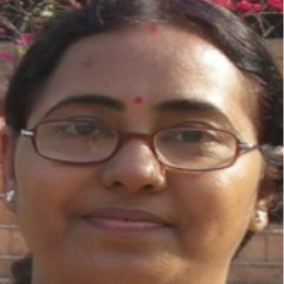International Journal of Modern Education and Computer Science (IJMECS)
IJMECS Vol. 6, No. 12, 8 Dec. 2014
Cover page and Table of Contents: PDF (size: 595KB)
Nature-Inspired Swarm Intelligence and Its Applications
Full Text (PDF, 595KB), PP.55-65
Views: 0 Downloads: 0
Author(s)
Index Terms
Stigmergic, pheromone, forage, AI (Artificial Intelligence), metaheuristic, emergence, SO (Self Organization), swarm intelligence.
Abstract
In 1989 Gerardo Beni and Jing Wang first proposed the name “Swarm Intelligence” in their paper “Swarm Intelligence in Cellular Robotic Systems”. Some remarkable observations of different researchers are studied in this paper, like the proximity principle, the quality principle, the principle of diverse response, the principle of stability, the principle of adaptability. To enhance the capabilities of robot and different systems, researchers started to exploit the behavior of natural systems. Swarm groups are governed by three rules, move in the same direction as your neighbor, remain close to your neighbor, and avoid collision with your neighbor .Characteristics of swarm groups are emergence and stigmergy. Different insects like ants, wasps, termites carry out a work locally for global goal with sufficient flexibility as they are not controlled centrally. In this paper the existing research works are analysed to show the behavior in social insects by using self-organization, positive feedback, negative feedback, amplification of fluctuation, multiple interactions. It has also been observed that these insects are almost blind and memoryless, still they communicate indirectly among themselves for stigmergic effect by using pheromone. Implementation of swarm intelligence in robotics i.e., swarm robots are narrated. The limitations of swarm robots as well as factors behind the success of swarm robotics have also been encompassed. Finally authors focus on swarm robots applications in telecommunication fields, civil engineering and digital image processing.
Cite This Paper
Sangita Roy, Samir Biswas, Sheli Sinha Chaudhuri, "Nature-Inspired Swarm Intelligence and Its Applications", International Journal of Modern Education and Computer Science (IJMECS), vol.6, no.12, pp.55-65, 2014. DOI:10.5815/ijmecs.2014.12.08
Reference
[1]G. Beni and J. Wang, Swarm intelligence in cellular robotic systems. In NATO Advanced Workshop on Robots and Biological Systems, Il Ciocco, Tuscany, Italy, 1989.
[2]http://en.wikipedia.org/wiki/Metaheuristic
[3]www.themedicieffect.typepad.com
[4]www.blog.livingroutes.org
[5]www.sciencemag.org
[6]www.myrmecos.net
[7]http://en.wikipedia.org/wiki/Carniolan_honey_bee
[8]www.lga.sa.gov.au
[9]www.termites.com
[10]www.orkin.com
[11]S. Roy, S. S. Chaudhuri, Cuckoo Search Algorithm using Lévy Flight: A Review, DOI:10.5815/ijmecs.2013.12.02,Vol-5,No-12
[12]http://en.wikipedia.org/wiki/File:Cuculus_canorus_vogelartinfo_chris_romeiks_CHR0791_cropped.jpg
[13]Wolfram, S. (1984). "Computation theory of cellular automata". Communications in Mathematical Physics 96: 15–57. DOI:10.1007/BF01217347
[14]Wolfram, S. “A New Kind of Science”, Wolfram Media (2002)
[15]Swarm Intelligence from natural to Artificial System by Eric Bonabeau and Marco Dorigo
[16]Fukuda, T., Nakagawa, S. “Approach to the Dynamically Reconfigurable Robotic System”, Journal of Intelligent Robotic Systems, 1, (1988) 55–72.
[17]Erich Schmid, Horst Ziegelmann, The quantum mechanical three-body problem, University of California, 1974.
[18]Theraulaz, G., Pratte, M., Gervet, J., “Behavioural profiles in Polistes dominulus Christ wasp societies: a quantitative study”, Behaviour, 113 (1990) 223–250.
[19]E. Bonabeau, M. Dorigo, and G. Theraulaz, Swarm Intelligence: From Natural to Artificial Systems, Oxford University Press, Oxford, 1999.
[20]Deveza, R., D. Thiel, A. Russell, and A. Mackay-Sim. "Odor Sensing for Robot Guidance." Int. J. Robotics Res. 13 (1994): 232-239.
[21]Russell, R. A. "Mobile Robot Guidance Using a Short-Liived Heat Trail." Robotica 11 (1993): 427-431.
[22]Prescott, T. J., and C. Ibbotson. "A Robot Trace Maker: Modeling the Fossil Evidence of Early Investebrate Behavior." Artificial Life 3(4) (1997): 289- 306.
[23]Kube, C. R. "Collective Robotics: From Local Perception to Global Action." Ph.D. Thesis, University of Alberta, 1997.
[24]M. Janga Reddy and D. Nagesh Kumar, An efficient multi-objective optimization algorithm based on swarm intelligence for engineering design, Engineering Optimization , Vol. 39, No. 1, January 2007, 49–68.
[25]X. D. ZHUANG1 and N. E. MASTORAKIS, Image Processing with the Artificial Swarm Intelligence, Advances in Image Analysis - Nature Inspired Methodology, ISBN: 978-960-474-290-5, Published by WSEAS Press.
[26]http://en.wikipedia.org/wiki/Swarm_intelligence
[27]Optimization of PD-PI Controller using Swarm Intelligence, Tushar jain, M. J. Nigam, Journal of Theoretical and Applied Information Technology.
[28]J. Kennedy and R. C. Eberhart. Particle Swarm Optimization. In Proceedings of IEEE International Conference on Neural Networks, Perth, Australia, pp. 1942–1948, 1995.
[29]R. C. Eberhart and J. Kennedy. A new optimizer using particle swarm theory. In Proceedings of the Sixth International Symposium on Micro Machine and Human Science, Nagoya, Japan, pp. 39–43, 1995.
[30]D. Karaboga, An Idea Based On Honey Bee Swarm for Numerical Optimization, Technical Report-TR06,Erciyes University, Engineering Faculty, Computer Engineering Department, 2005.
[31]D. Karaboga and B. Basturk, A Powerful And Efficient Algorithm For Numerical Function Optimization: Artificial Bee Colony (ABC) Algorithm, Journal of Global Optimization, Springer Netherlands, Vol. 39, No. 3, pp: 459-471, 2007.
[32]A. P. Engelbrecht (ed.), Computational Intelligence: An Introduction. John Wiley & Sons, England, 2002.
[33]C. P. Lim, L. C. Jain, and S. Dehuri, Innovations in Swarm Intelligence: Studies in Computational Intelligence, Vol. 248, Springer, 2009.
[34]S. Das, B. K. Panigrahi, and S. S. Pattnaik, Nature-Inspired Algorithms for Multi-objective Optimization, Handbook of Research on Machine Learning Applications and Trends: Algorithms Methods and Techniques, Hershey, New York, Vol. 1, pp. 95–108, 2009.
[35]S. Das, A. Abraham, and A. Konar, Swarm Intelligence Algorithms in Bioinformatics, Studies in Computational Intelligence. Vol. 94, pp. 113–147, 2008.
[36]K. E. Parsopoulos and M N. Vrahatis, Particle Swarm Optimization and Intelligence: Advances and Applications, Information Science Reference, Hershey, Pennsylvania, 2010.
[37]E. Bonabeau, C. Meyer, Swarm Intelligence: A Whole New Way to Think About Business, Harvard Business Review, Vol.79, No.5, pp. 106-114, 2001.
[38]K. M. Passino, Biomimicry of Bacteria Foraging for Distributed Optimization and Control, IEEE Control Systems Magazine, Vol. 22, 52–67, 2002.
[39]S.-C. Chu, P.-W. Tsai and J.-S. Pan, Cat swarm optimization, Proc. of the 9th Pacific Rim International Conference on Artificial Intelligence, LNAI 4099, pp. 854-858, 2006.
[40]M. Bakhouya and J. Gaber, An Immune Inspired-based Optimization Algorithm: Application to the Traveling Salesman Problem, Advanced Modeling and Optimization, Vol. 9, No. 1, pp. 105-116, 2007.
[41]K.N. Krishnanand and D. Ghose, Glowworm swarm optimization for searching higher dimensional spaces. In: C. P. Lim, L. C. Jain, and S. Dehuri (eds.) Innovations in Swarm Intelligence. Springer, Heidelberg, 2009.
[42]L. Keller and E. Gordon, The Lives of Ants, Oxford University Press, Oxford 2009.
[43]D. E. Jackson, F. L. Ratnieks, Communication in ants, Current Biology, Vol. 16, No. 15, pp. R570–R574, 2006.
[44]P. Karlson and M. Lüscher, Pheromones: a new term for a class of biologically active substances. Nature, Vol. 183, pp. 55–56, 1959.
[45]C. Lloyd, The alarm pheromones of social insects: A review, Technical report, Colorado State University, 2003.
[46]S. Goss, S. Aron, J.-L. Deneubourg, and J. M. Pasteels, Self-Organized Shortcuts in the Argentine Ant, Naturwissenchaften, Vol. 76, pp. 579-581, 1989.
[47]M. Dorigo and T. Stützle, Ant Colony Optimization. MIT Press, Cambridge, 2004. ISBN: 978-0-262-04219-2.
[48]N. Zhao, Z. Wu, Y. Zhao, and T. Quan, Ant colony optimization algorithm with mutation mechanism and its applications. Expert Systems with Applications, Vol. 37, No. 7, pp. 4805-4810, 2010.
[49]R. Beckers, J.-L. Deneubourg, and S. Goss, Modulation of trail laying in the ant Lasius niger (hymenoptera: Formicidae) and its role in the collective selection of a food source, Journal of Insect Behavior, Vol. 6, No. 6, pp. 751–759, 1993.
[50]L. M. Gambardella, M. Dorigo, Ant colony system hybridized with a new local search for the sequential ordering problem. INFORMS J. Comput, Vol. 12, No. 3, pp. 237–255, 2000.
[51]C. Blum, Beam-ACO—Hybridizing ant colony optimization with beam search: An application to open shop scheduling, Comput. Oper. Res., Vol. 32, No. 6, pp. 1565–1591, 2005.
[52]Sangita Roy, Sheli Sinha Chaudhuri, Bio-inspired Ant Algorithms: A review, IJMECS, DOI: 10.5815/ijmecs.2013.12.02 ,ISSN: 2075-0161 (Print), ISSN: 2075-017X (Online)
[53]Sangita Roy, Sheli Sinha Chaudhuri, Cuckoo Search Algorithm using Lévy Flight: A Review, 2013, 12, 10-15, DOI: 10.5815/ijmecs.2013.12.02,Vol-5,No-12ISSN: 2075-0161 (Print), ISSN: 2075-017X (Online)
[54]Swarm Intelligence by James Kennedy and Russell Eberhart.
[55]B. K. Panigrahi, Y. Shi, and M.-H. Lim (eds.): Handbook of Swarm Intelligence. Series: Adaptation, Learning, and Optimization, Vol 7, Springer-Verlag Berlin Heidelberg, 2011. ISBN 978-3-642-17389-9.
[56]C. Blum and D. Merkle (eds.). Swarm Intelligence – Introduction and Applications. Natural Computing. Springer, Berlin, 2008.
[57]M. Belal, J. Gaber, H. El-Sayed, and A. Almojel, Swarm Intelligence, In Handbook of Bioinspired Algorithms and Applications. Series: CRC Computer & Information Science. Vol. 7. Chapman & Hall Eds, 2006. ISBN 1-58488-477-5.
[58]M. Dorigo, E. Bonabeau, and G. Theraulaz, Ant algorithms and stigmergy, Future Gener. Comput. Syst., Vol. 16, No. 8, pp. 851–871, 2000.
[59]M. Dorigo, V. Maniezzo, and A. Colorni, Positive feedback as a search strategy, Tech. Report 91-016, Dipartimento di Elettronica, Politecnico di Milano, Italy, 1991.
[60]M. Dorigo, Optimization, learning and natural algorithms (in Italian), Ph.D. Thesis, Dipartimento diElettronica, Politecnico di Milano, Italy, 1992.
[61]A. Colorni, M. Dorigo, V. Maniezzo, and M. Trubian. Ant System for Job-shop Scheduling. Belgian Journal of Operations Research, Statistics and Computer Sci-ence, 34(1):39-53, 1994.

